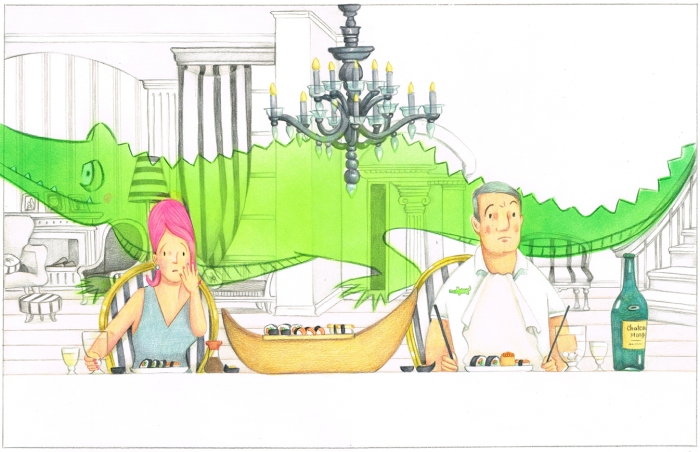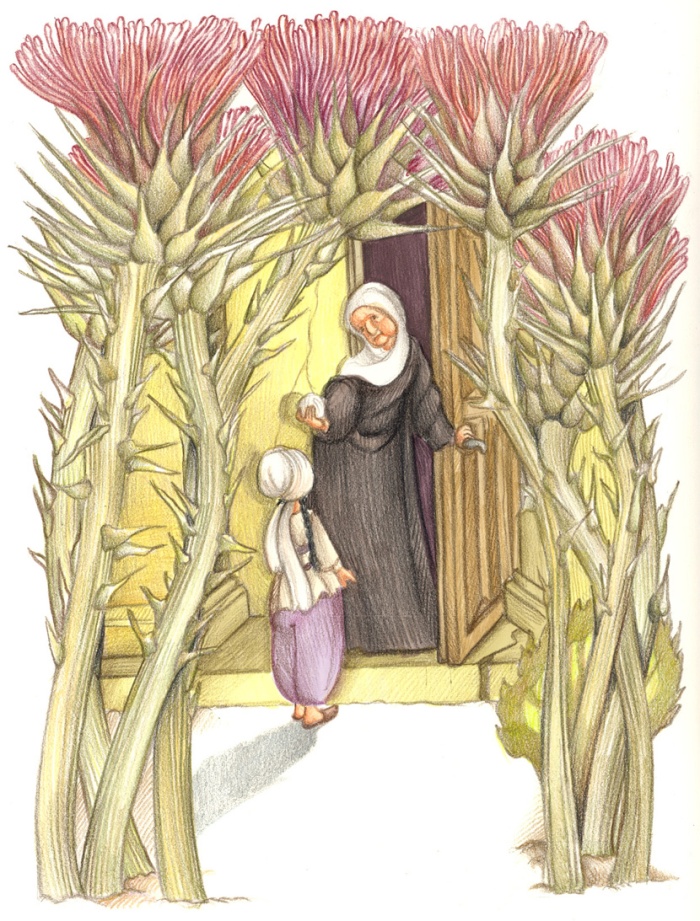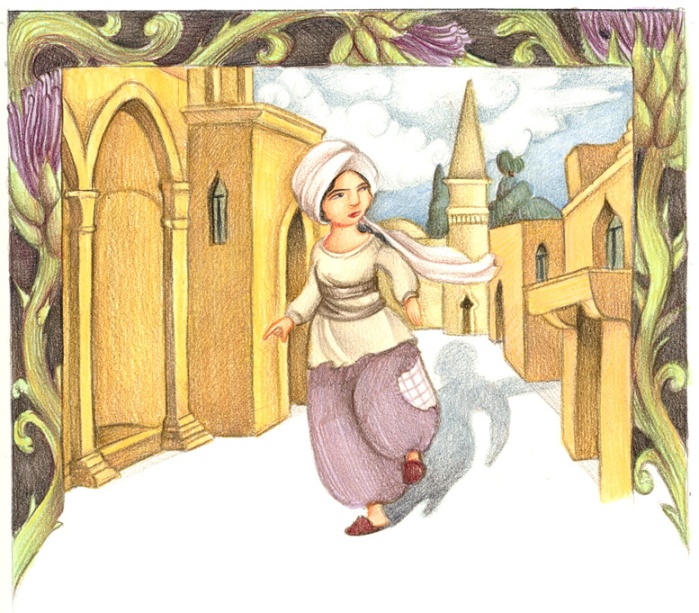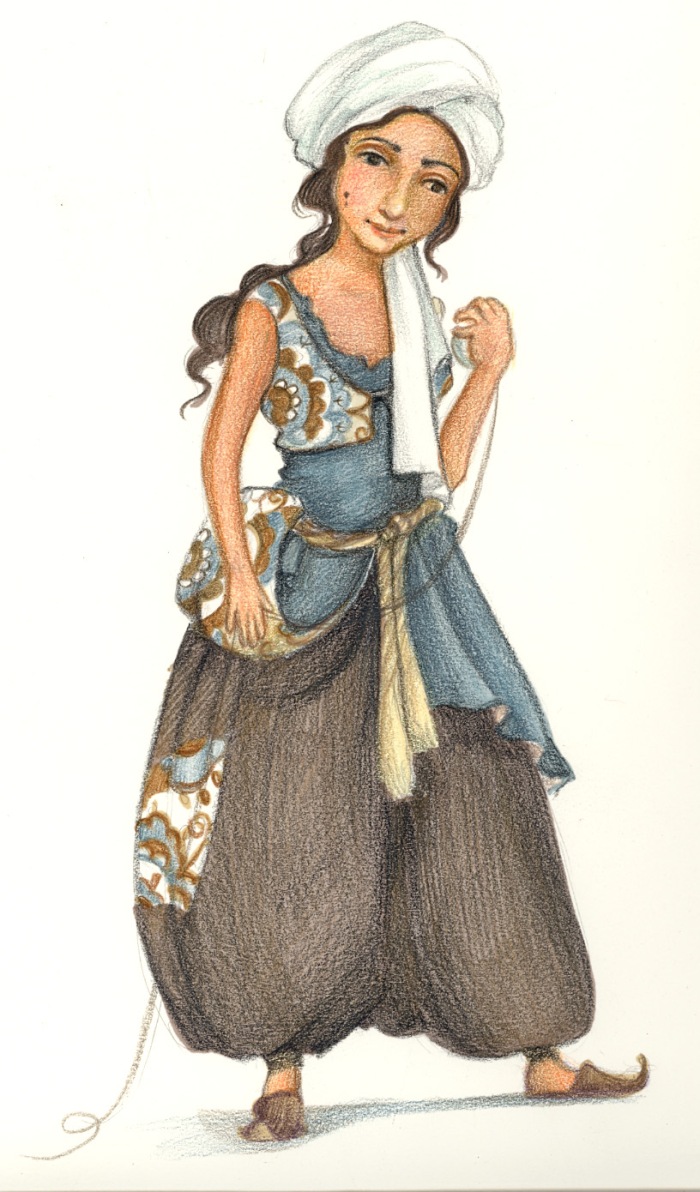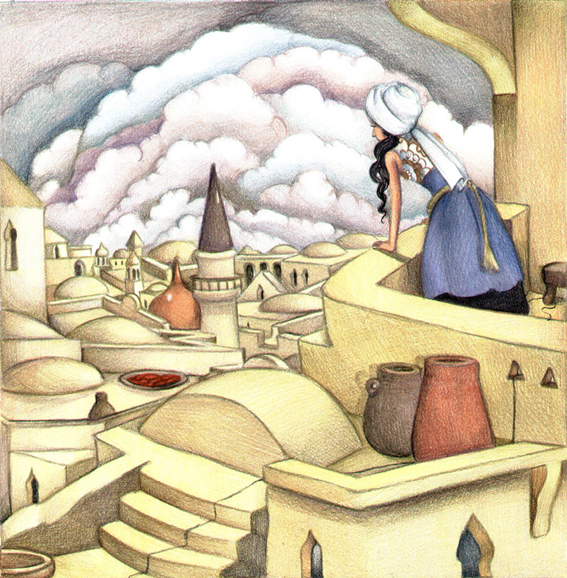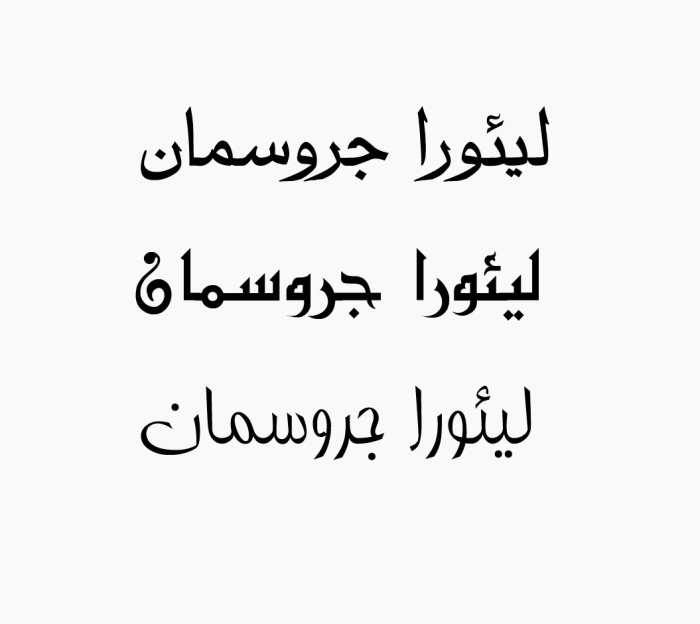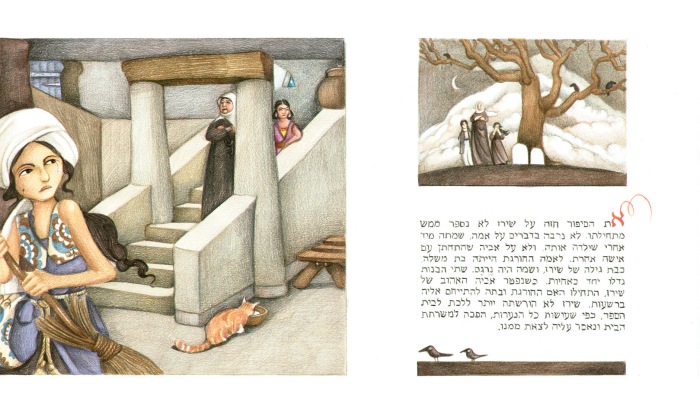Before coming to Latvia, I asked Marika Piņķe, (the Culture and Public Affairs Officer) to arrange a few meetings for me with local publishers. The first one was Ms. Renate Punka from the Janis Roze Publishing House. This is one of the well established Latvian publishing houses. Among the things she had shown me, I liked this Japanese inspired book by Anita Kreituse, that somehow manages to remain very Latvian. (What makes an illustration Local? that’s what the “I am from here” exhibition is all about. Stay tuned…)
Next stop was the complete opposite: Liels un masz (“little and big”) is a very hype, young publishing house. It is run by one of the coolest young publishers I’ve ever met outside of the Bologna children’s book fair: Alise Nigale, strives to constantly think out of the box. I saw some crazy books she had published, including one that used photography as a new form of illustration.
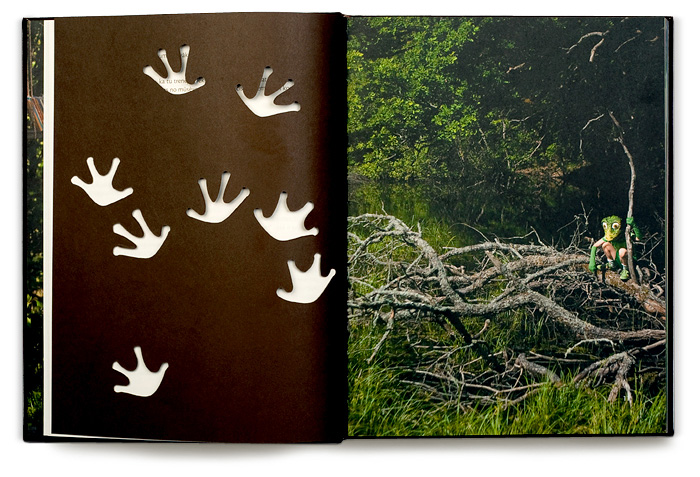 Latviešu zvēri, By Inese Zandere, Creative director: Mārtiņš Grauds, Photography: Kristaps Kalns, Graphic design: Rūta Briede un Artis Briedis
Latviešu zvēri, By Inese Zandere, Creative director: Mārtiņš Grauds, Photography: Kristaps Kalns, Graphic design: Rūta Briede un Artis Briedis
And a lovely series of small paperbacks , titled “Bicki Buck”. This series features a wide scale of outstanding children’s poetry, visually interpreted for children by artists of different styles and genres: graphic artists, painters, stage designers, textile artists, animators etc. they sell for a Euro each, and I got quite a few. You know how sometimes contemporary illustrations look like to much of the same thing? Doesn’t happen in the Bicki-Buck series. Each one of the books is a small masterpiece.
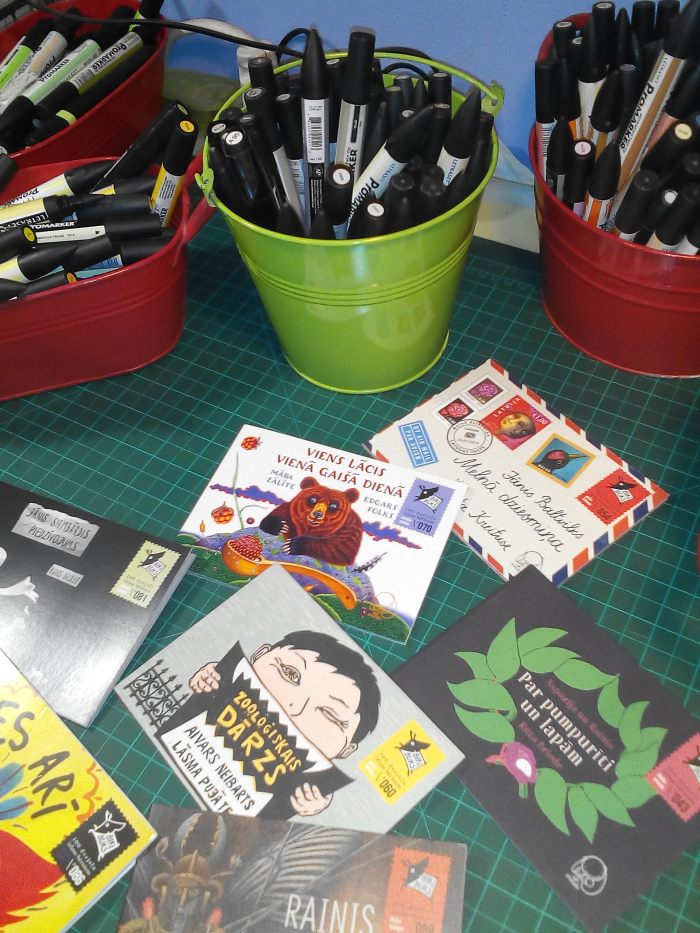
The creative director, and art editor of this series is a fellow illustrator, Ruta Brieda (Her husband, Artis Briedis, is the Graphic designer). Ruta, besides being one of the funniest, nicest and smartest people I had the pleasure to meet, is my complete opposite in terms of illustration. To begin with, her books are published under her initials – “R.B” Being the diva that I am, I just don’t get it! If I could have my full name on a cover, like Donald Trump’s name on a building – I would do it already. Ruta’s art is simple, light handed, yet – smart. There are no unnecessary details. She is a minimalist. I told you, the complete opposite of me. Opposites attract, so I was told – and we did become friends right away.
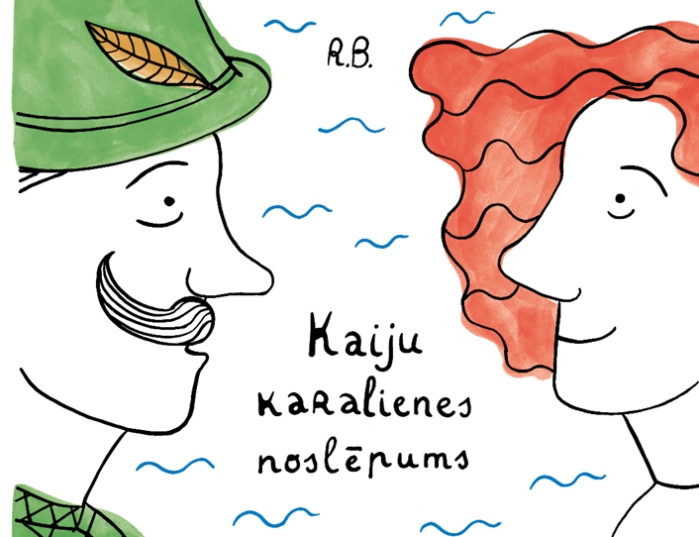
Here is a link to Ruta’s delightful art http://www.rutabriede.lv
Ruta invited me to attend a student review at the art-academy where she teaches. Here’s the thing: After dealing with young artists for, well… most of my life, I don’t buy the theory of young artists being brighter blah-blah-blah. I have met some artists who were more fresh and innovative in their 70’s than most of their students. However, some artists pop up immediately. In this case there were 2 young people I couldn’t help but notice. It turned out both of them were exchange students. A word about the assignment: the Latvian art-academy doesn’t have an illustration faculty. Most of the students (I take it that some of them study visual communications and others study various techniques of print) had their first brush with the concept of illustration. They came up with a nonsense tale (each student contributed one line to the story, and the outcome was goofy, to say the least), and tackled it at the best of their ability.
The first student who caught my eye was Davor Dmirtrovic from Croatia. He created a monumental book (something you can only do as a student, and later on – maybe once in your life). His bright use of acrylic, and snarky sense of humor couldn’t go unnoticed.
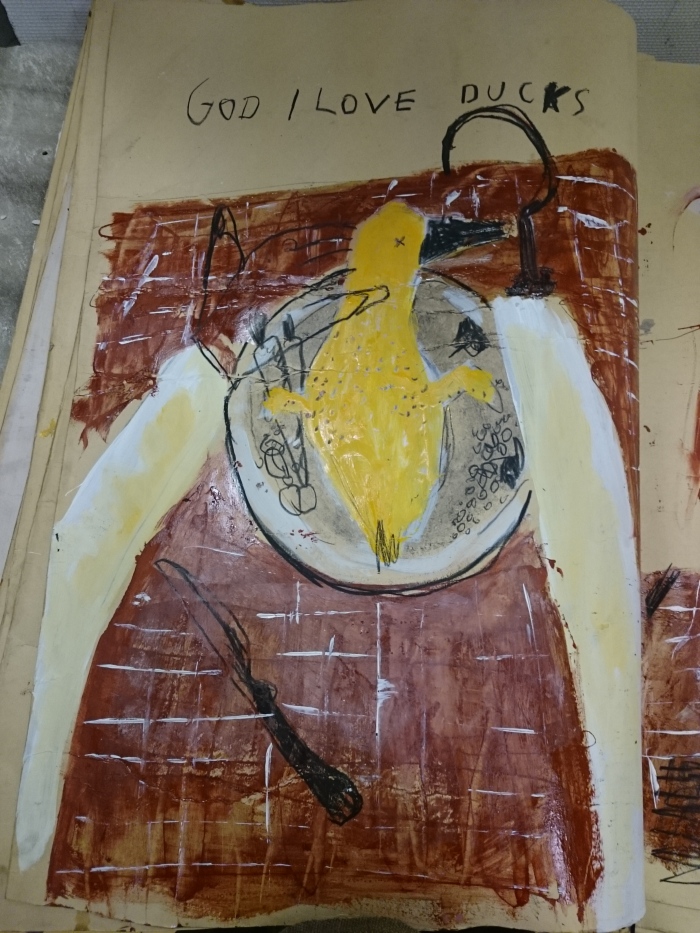
I found the fact that he chose to cook and serve the hero of the story, hilarious.
After looking at many projects – some better than others, I noticed a tiny device – something between a light box, and an old-fashioned magic lantern. It was placed in a corner, and above it – there were strange artifacts that looked like nothing I could make sense off. I was intrigued.
In the box – there was a scroll, slowly moved by a little handle. Much like a child, I was lured in by the promise of adventure, and stood by the young artist for 10 minutes, as she patiently unfolded the scroll to reveal a wonderful story, made with great patience and love for small details. essentially, it was the same goofy story of a duck, but she took it seriously. She used the text as a platform to create an illustrated silent book, that could never be published as a book (given the method of her presentation). What she really did was offer me a unique experience. Not a flashy, loud spectacle – but an intimate, exquisite show that much like the little objects she found on the railway near her home – was not handed to me on a platter. Now THAT is a big deal. Only very few artists I know had delivered their teachers (and their guests) a full experience instead of a solution to a specific project. Most of them became very famous in later years.
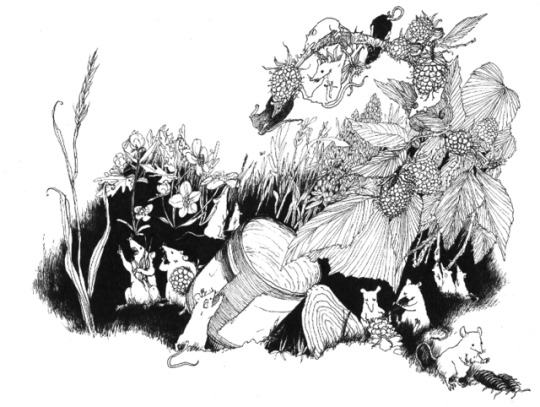
Sophie gave me a tiny present: a matchbox, with an interesting image printed on it. I joyfully accepted it (I collect matchboxes). But before we left, she ran outside, to the freezing wind, and gave me another gift: a tiny print (1 of 2 copies), just to say “thank you” for telling her how special she is. In a few years that would be common knowledge, but I will be the one to own a print by Sophie Kurzer, from Germany! here is a link to Sophie’s site. Take your time with it… sophiekurzer.tumblr.com
Now we had to go upstairs as we were invited to the chambers of the rector himself. Usually, a rector’s office is, ah… an office. You have the desk, you have the executive chair. You have the filing cabinet, the dusty computer, the miserable cactus, and the slightly broken Venetian blinds – the usual stuff. None of that was the case in Aleksejs Naumovs’ chambers. He has antique style lumpy sofas, a huge old-fashioned desk, a great view of the city, and a lot of beautiful art on the walls (Mr. Naumovs is an artist and an illustrator). As I was helping myself to another piece of hand-made, fine chocolate, while going through his books, I thought I could get used to this.
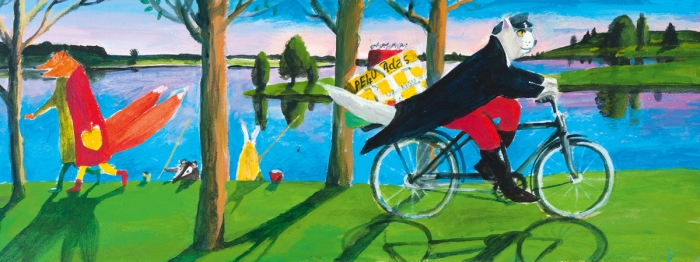 Aleksejs Naumovs, from: “Ahoi! Plūdi Daugavā”, by: Juris Zvirgzdiņš, Zvaigzne ABC, 2014
Aleksejs Naumovs, from: “Ahoi! Plūdi Daugavā”, by: Juris Zvirgzdiņš, Zvaigzne ABC, 2014
At the very end of our visit, entered Mr. Naumovs’ wife – the renown Latvian illustrator Anita Paegle. I actually knew Anita’s art from before. I used one of her illustrations to demonstrate the concept of locality in picture books, in the lecture I gave during the IBBY conference, a few days earlier.
Anita Peagle, from “Ods nokrita no ozola”, 1990
Mrs. Peagle is a very local artist . She uses her city as a basis to wonderful adventures, drawn in watercolors . I’ve read somewhere that when she started out – there was only one publishing house in Latvia. If that is so – Then she is truly the mother of Latvian illustration, and I was honored to meet her.
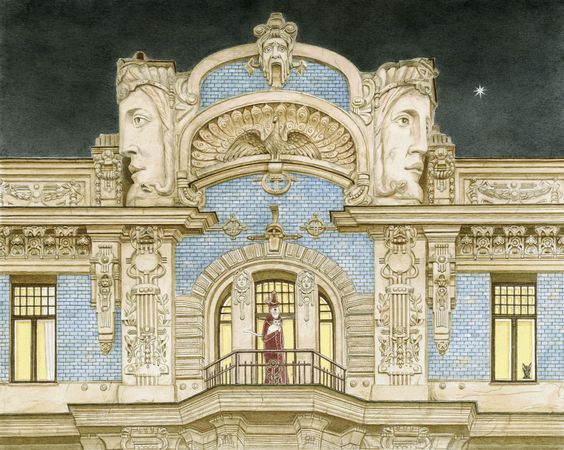
Anita Peagle, from “Kad karaliene bij Riga”, 2001
There was another interesting person I met in Latvia, that I really need to mention. Somewhere, between ambassadorial dinner parties and art school reviews, we took the most interesting tour in Riga. Riga is “the capital” of Jugendstil architecture (Otherwise known as “Art nouveau”.

What random visitors rarely get to see is the less famous neighbourhood of the local wooden houses – the original style of architecture, that was pushed aside by the fancy faces and nude figures on the Art nouveaux buildings. Maybe it’s because the wooden houses are more traditional, or maybe it’s because they were inhabited by the not-so-well-to-do people, but they were snubbed by UNESCO. There is no awareness, therefore – no funds to preserve them, so they slowly decade or get run down for newer projects. A young group of people, who grew up in these parts, are devoted to saving the special spirit of the place. They formed a small company, that offers a free storytelling tour, in that part of Riga. My instructor, Ieva Laube, is a writer, and she gave us the most interesting 2 hours tour, in perfect English. If you go to Riga, be sure to contact these guys, at http://agenskalns.berta.me/ or https://www.facebook.com/AgenskalnsFreeTour/ And help save a lovely, authentic part of one of the most beautiful cities you’ll ever see. On that note… That’s all for today, folks!!!












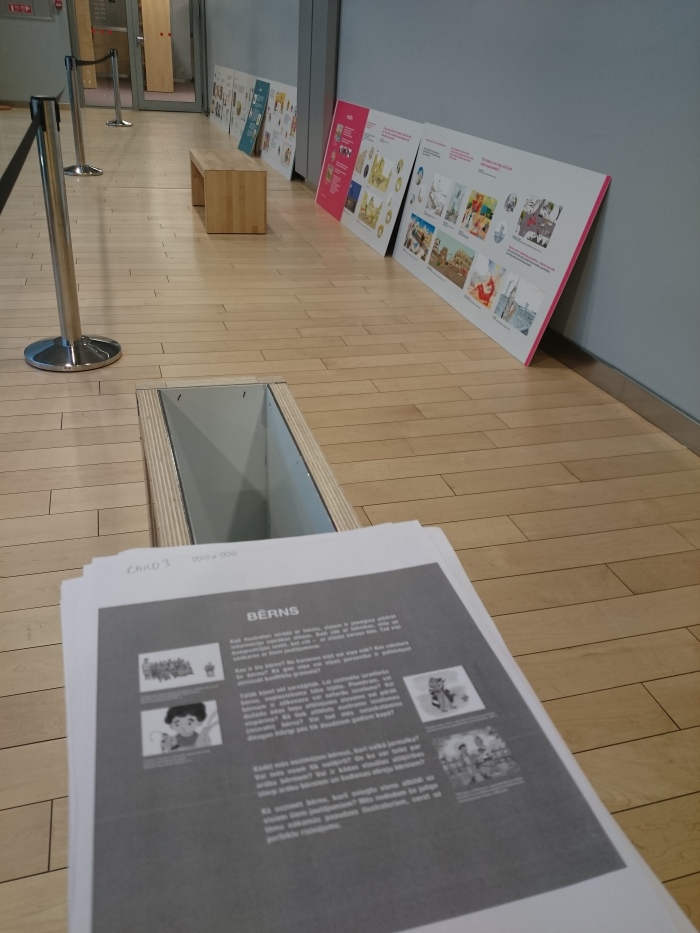 Everything is lying on the floor. That’s how it usually starts.
Everything is lying on the floor. That’s how it usually starts.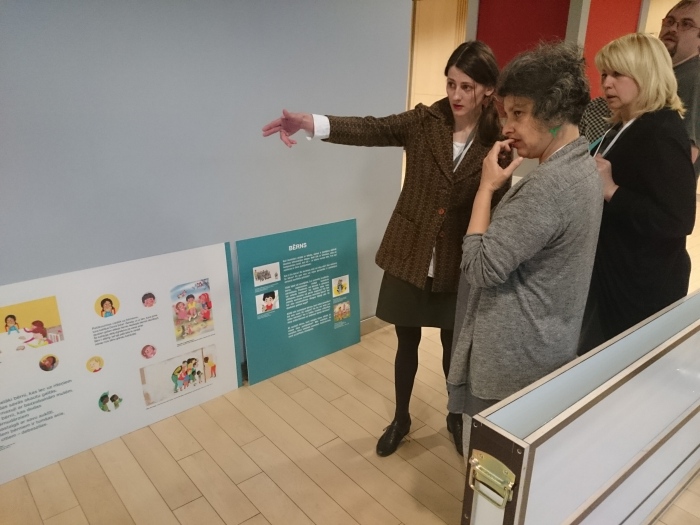 And there is always a problem. Here, for instance – Marika (The beautiful blonde on my right), and Madara Daudze (who is in charge of the hanging process along with the very nice guy in the back) – are trying to figure out where to hang the colored panels. they were made specifically for separate columns in the original location, and tend to pose a problem in every new one.
And there is always a problem. Here, for instance – Marika (The beautiful blonde on my right), and Madara Daudze (who is in charge of the hanging process along with the very nice guy in the back) – are trying to figure out where to hang the colored panels. they were made specifically for separate columns in the original location, and tend to pose a problem in every new one.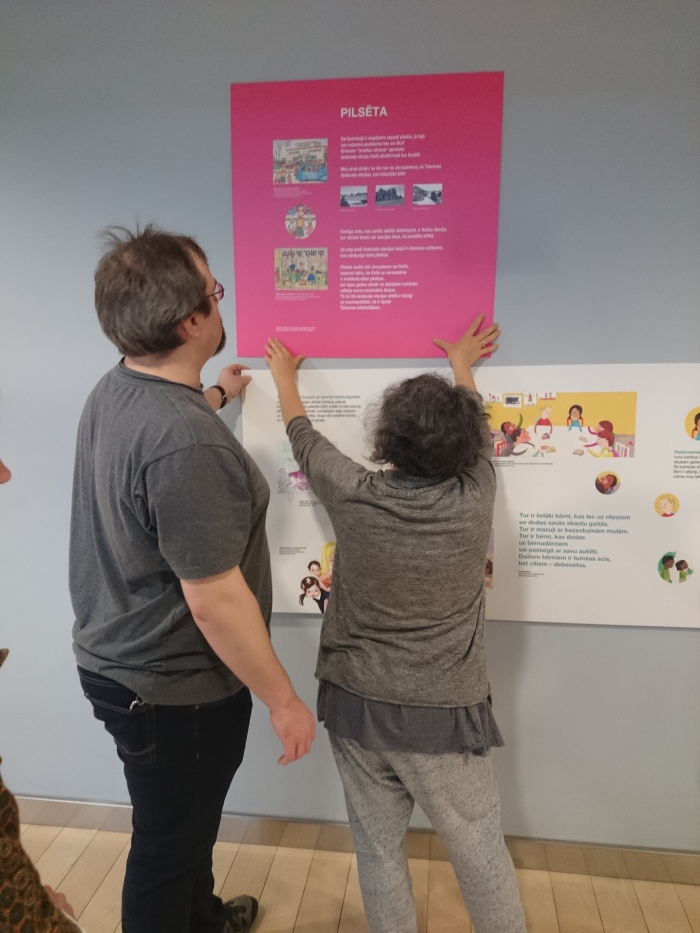 A-n-d problem solved.
A-n-d problem solved.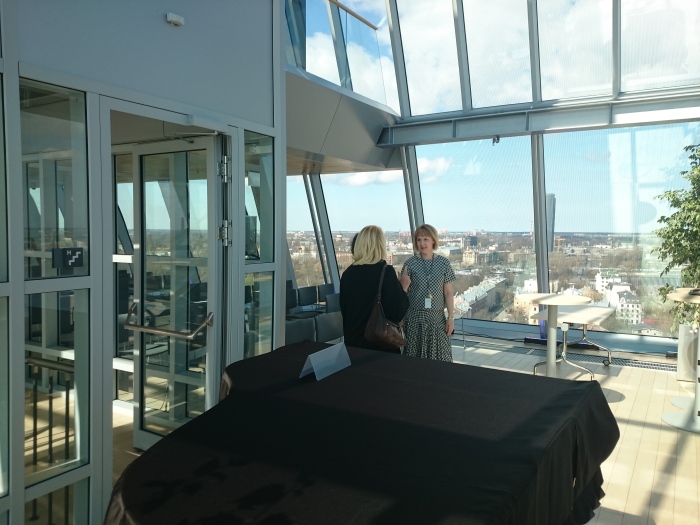 Time to see Riga from the library’s Rooftop. Marika is seen from the back, Silvija from the front, mine is the pointing finger in the middle.
Time to see Riga from the library’s Rooftop. Marika is seen from the back, Silvija from the front, mine is the pointing finger in the middle.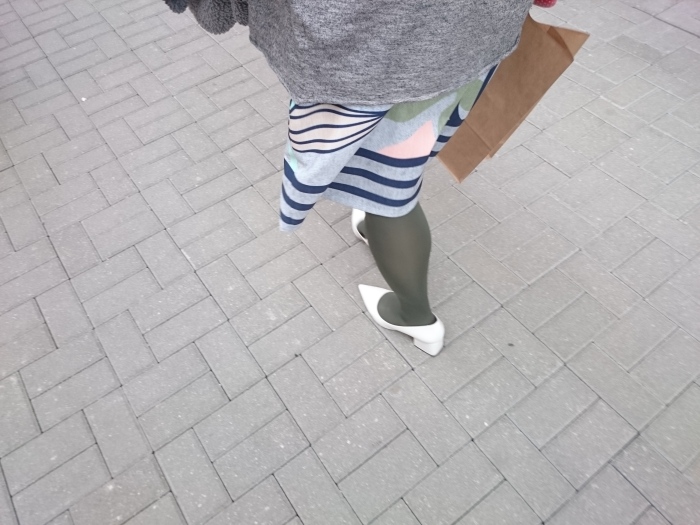 Ouch!!!
Ouch!!!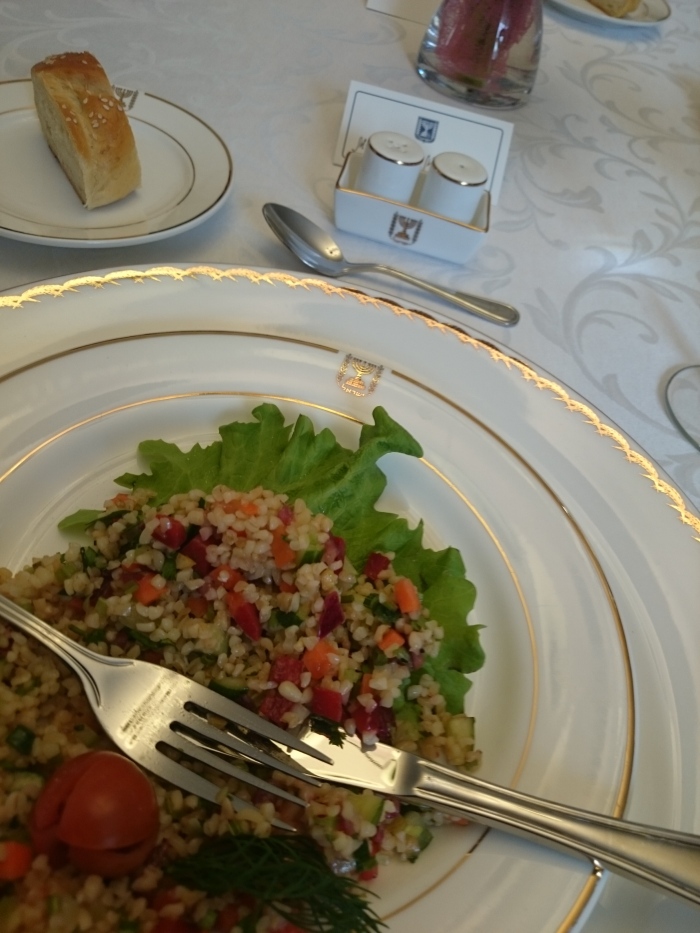
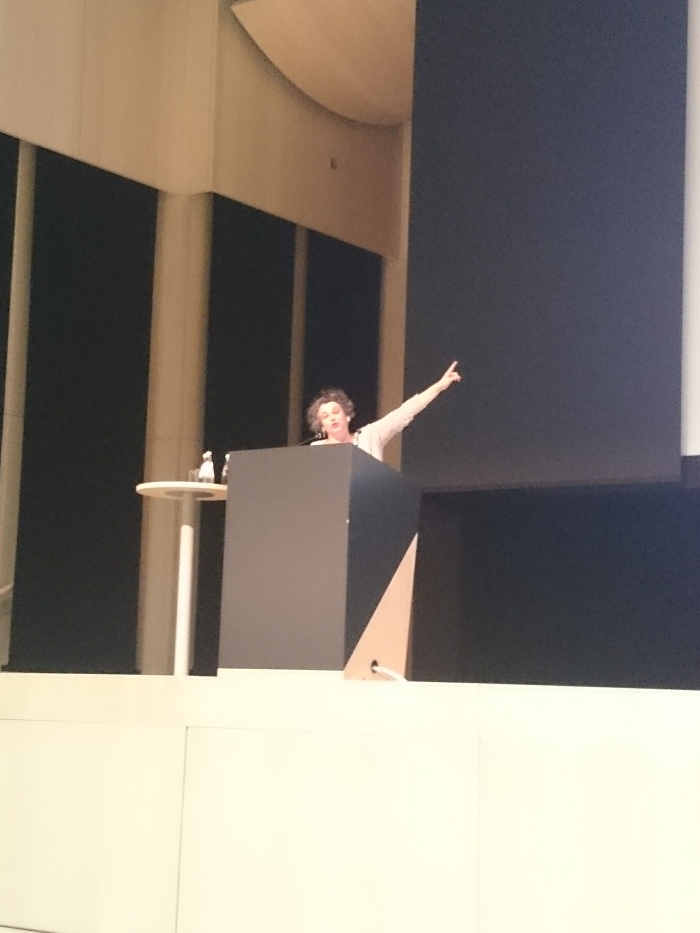
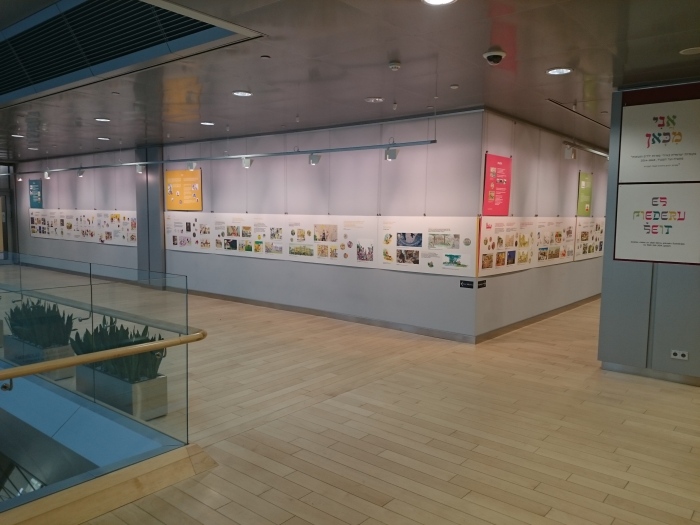





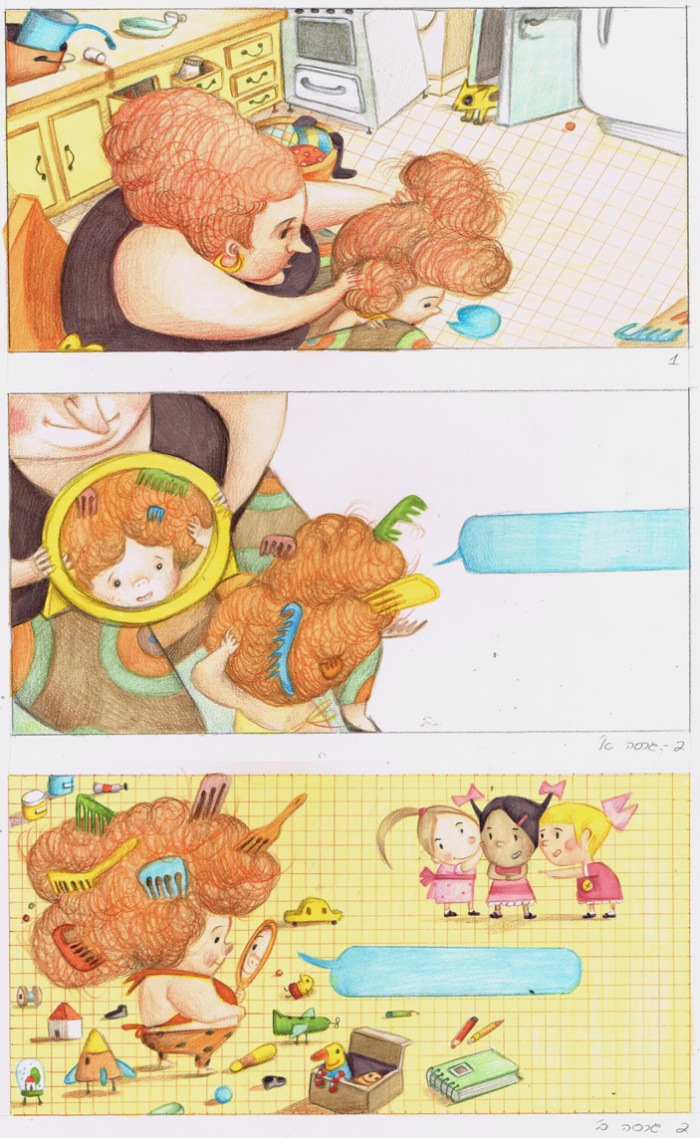
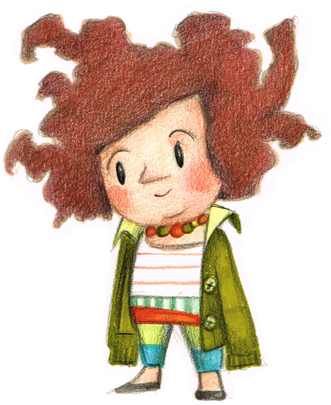
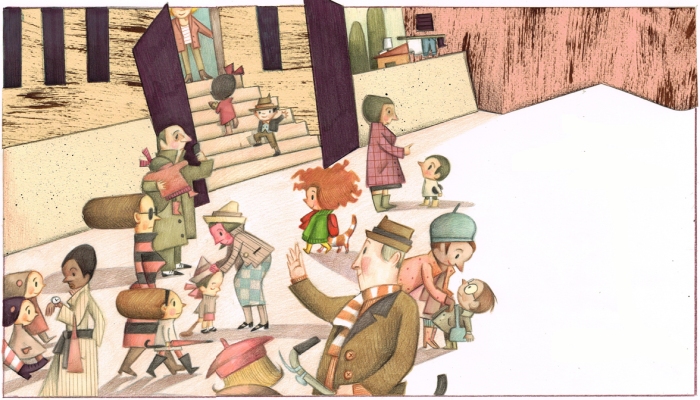
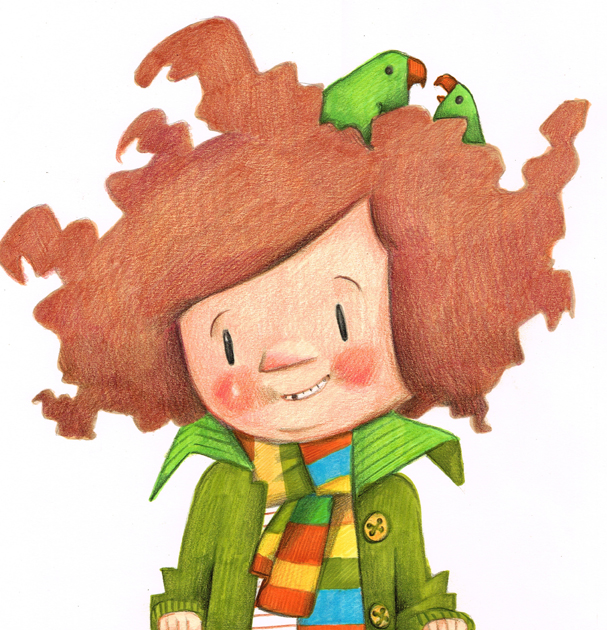
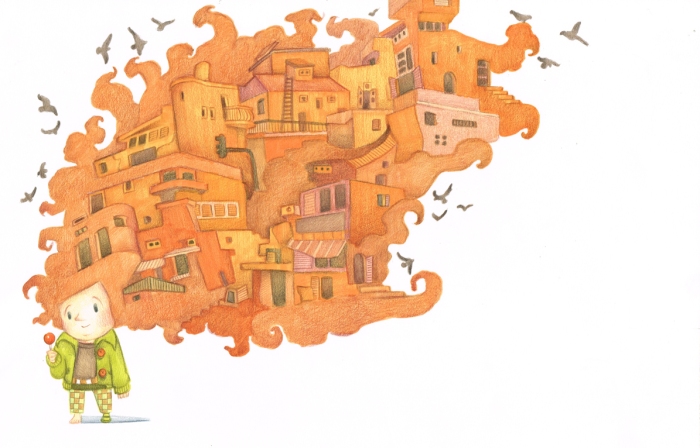
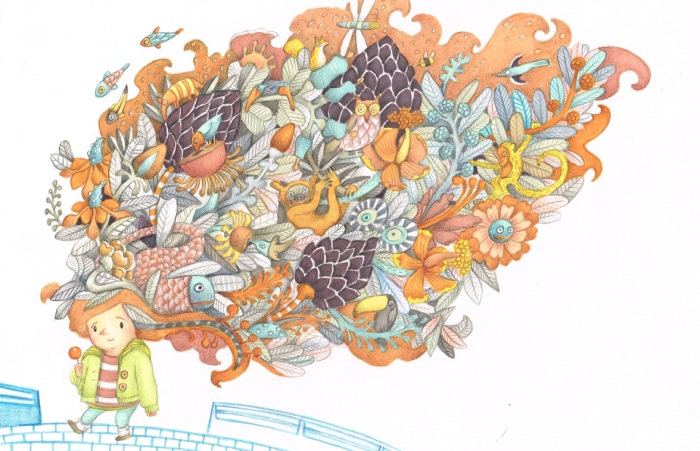
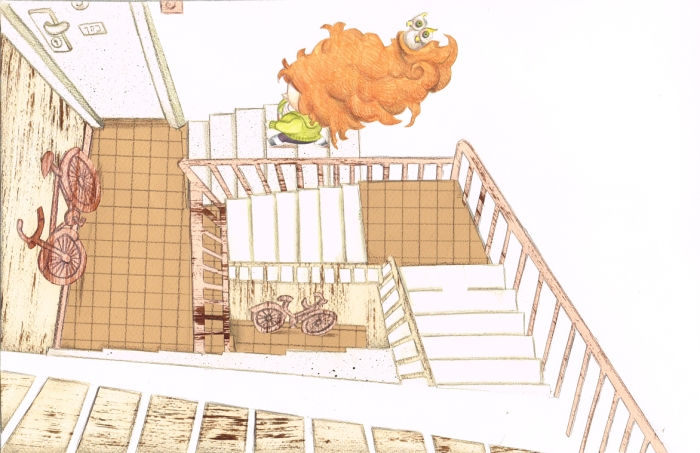
 Then I thought it would be fun to try an Esher inspired stair-case. Jonathan thought it was great but our editor didn’t. That, I think, Is a good point to stop, and explain: Working on a book in The states, or in Europe is very different from working on a book in Israel. In Europe and The States – the writer is never involved in the visual aspect of the book. An illustrator works along-side a graphic-designer, an art-director, and an editor. In Israel, the author has an equal say in everything. It’s sometimes frustrating, but after all – the author and illustrator are equal partners, and I think that’s the way it should be.
Then I thought it would be fun to try an Esher inspired stair-case. Jonathan thought it was great but our editor didn’t. That, I think, Is a good point to stop, and explain: Working on a book in The states, or in Europe is very different from working on a book in Israel. In Europe and The States – the writer is never involved in the visual aspect of the book. An illustrator works along-side a graphic-designer, an art-director, and an editor. In Israel, the author has an equal say in everything. It’s sometimes frustrating, but after all – the author and illustrator are equal partners, and I think that’s the way it should be.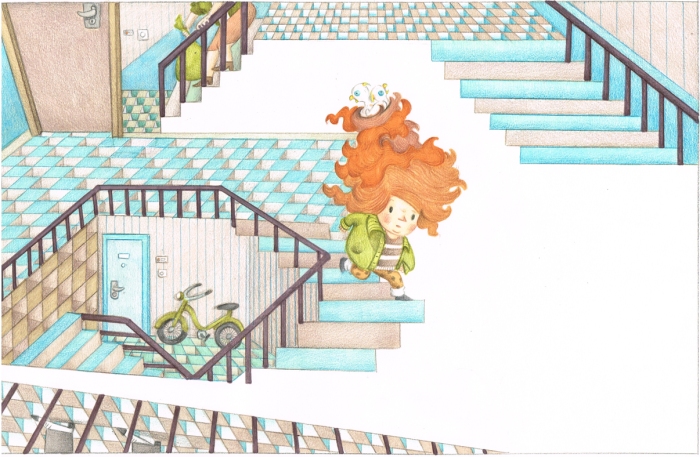

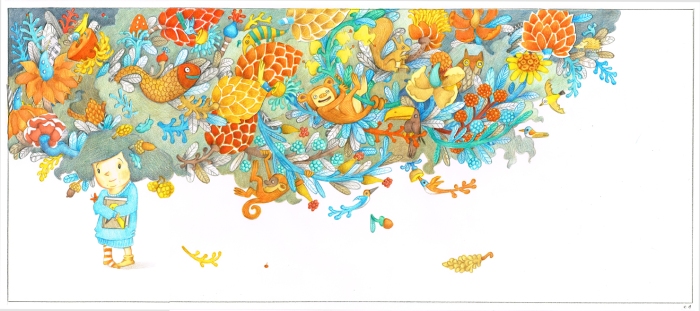
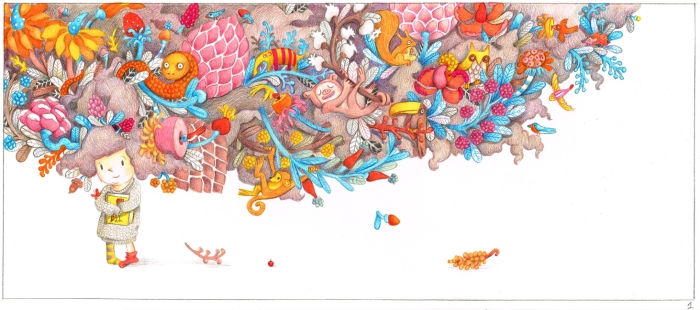
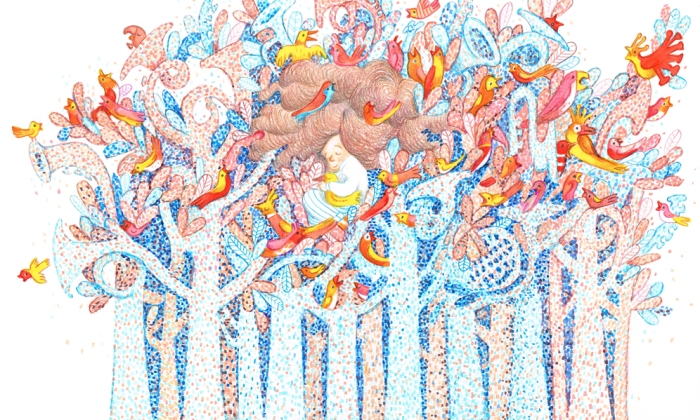

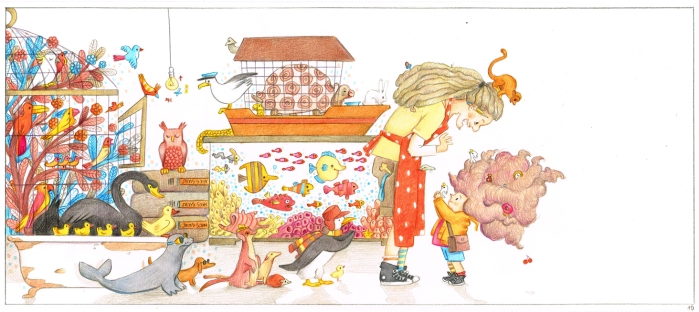
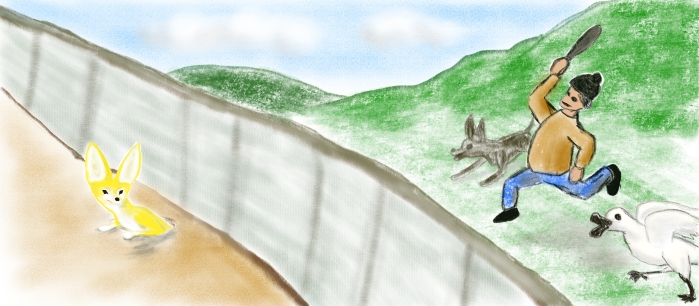
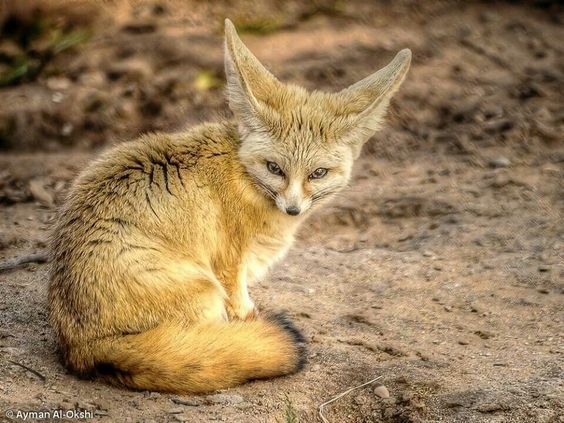
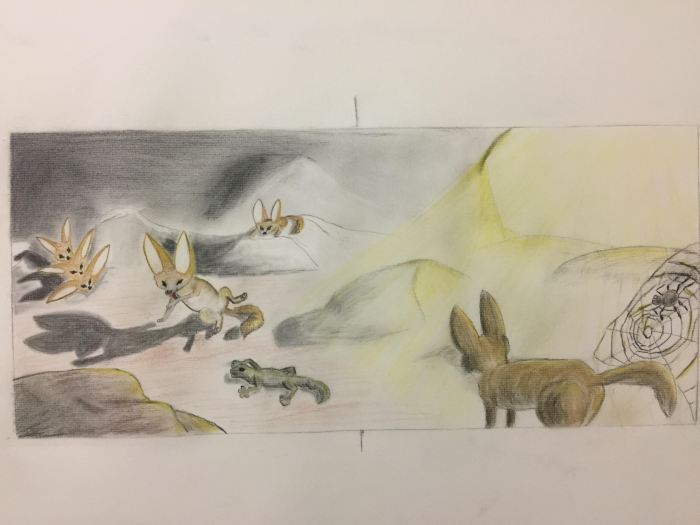
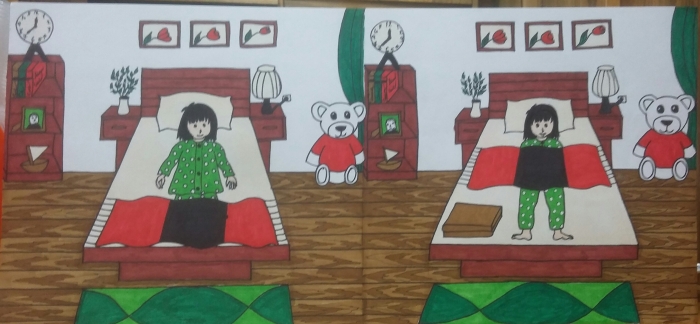
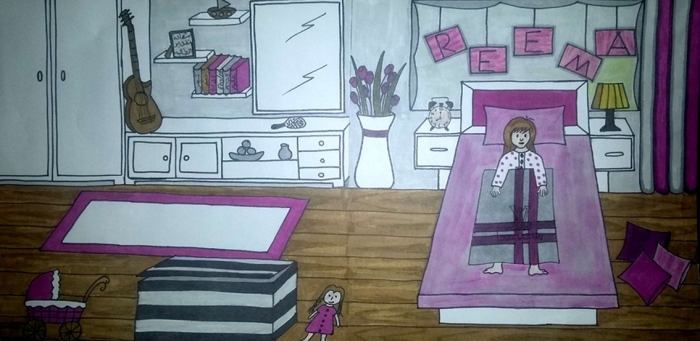
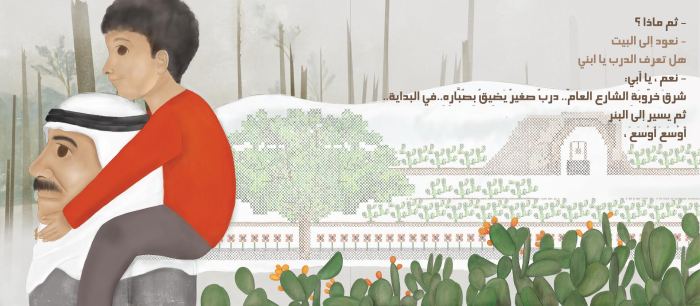


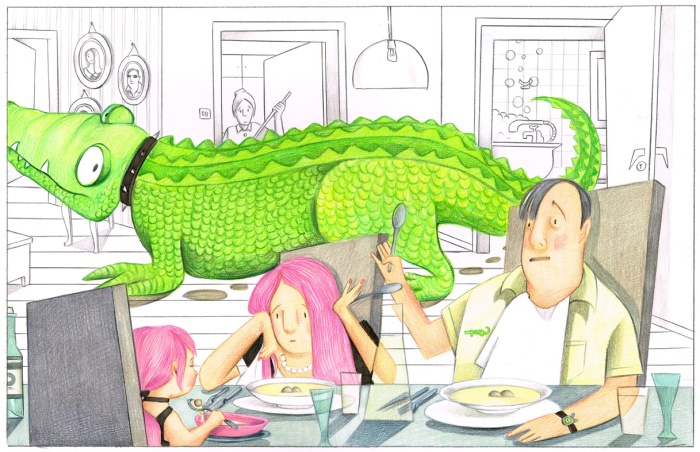 Amalia wants a pet, By Yael Ichilov, Am-Oved 2014 – Concept drawing
Amalia wants a pet, By Yael Ichilov, Am-Oved 2014 – Concept drawing